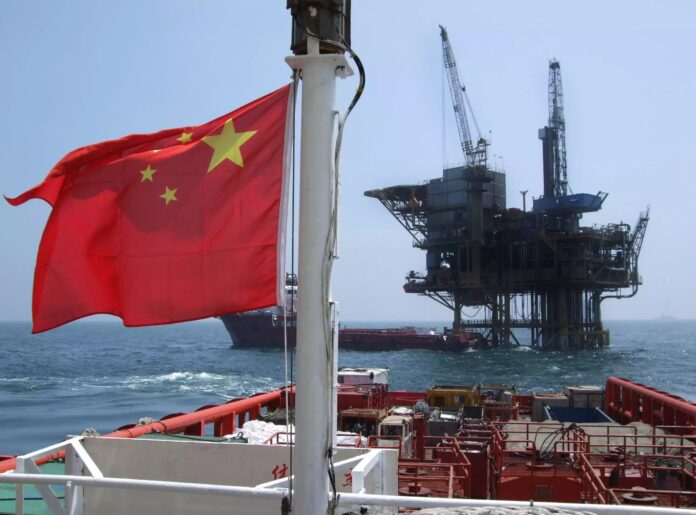In China, local governments are inspecting businesses weekly to find excuses to fine them. One factory owner said he doesn’t keep working capital in nearby banks because the government would use its pull with those banks and force him to grant “loans.”
China’s Ministry of Finance reported that local governments had 35 trillion yuan ($5.03 trillion) in on-the-books debt at the end of last year, but that figure makes the situation look better than it truly is. The Rhodium Group estimates that the notorious LGFVs—local government financing vehicles—alone owed 59 trillion yuan at the end of 2022. Total local government debt was far higher: Desperate local officials are almost certainly not reporting those forced loans to central authorities.
The poor financial condition of local governments is just one of many symptoms of an economy in distress. China cannot be growing at the 4.5 percent pace reported by the official National Bureau of Statistics for the first calendar quarter. Moreover, the economy will not grow 6.2 percent in the first half, as official sources are predicting. Imports, perhaps the best indicator of domestic demand, have fallen for eight-straight months and nine of the last 10.
So what’s worse than a contracting economy? That would be a contracting economy for which there are no solutions in sight.
It is now almost impossible for Chinese ruler Xi Jinping to fix the situation. Take exports. In May, they fell 7.5 percent year-on-year. The forecast was for only a 0.4 percent drop. Factories across the country are begging for orders. Others have had to close or move to nearby countries like Vietnam.
“The weak exports confirm that China needs to rely on domestic demand as the global economy slows,” said Zhiwei Zhang of Pinpoint Asset Management to Reuters. “There is more pressure for the government to boost domestic consumption in the rest of the year, as global demand will likely weaken further in the second half.”
Many this year have said consumer spending would rescue the economy. That was unrealistic. About 70 percent of middle-class wealth is locked in property, and the property sector, which accounts for at least a quarter of gross domestic product, is ailing. New home sales fell 28 percent in June, compared to the low base of the same month last year. For the first six months of this year, they grew by only 0.2 percent year-on-year. The Chinese are not feeling wealthy, so it’s unlikely they are going to splurge in the stores. Call it a reverse wealth-effect.
Domestic consumption is weak in large part because pessimism pervades China. The flood of Chinese migrants at America’s southern border is just one indication that middle-class Chinese are giving up on their country. The migrants are, by and large, not poor; they are able to pay $35,000 a head to Mexican cartels to smuggle them across the border.
Despite what it says about encouraging consumer spending, China’s central government is adopting measures limiting personal income, like decreasing deposit rates at the banks. “The lower deposit rates are also a desperate attempt to salvage bank profits,” Andrew Collier of Hong Kong-based Orient Capital Research told me. “The banks are absorbing increasing losses from rolled-over bad loans and lower interest payments from local governments and LGFVs. Beijing would rather save the banks—key to the state system—than increase incomes to average citizens through savings deposits.”
In the past, Chinese leaders would just create debt and build infrastructure projects to manufacture GDP. Yet China is now overburdened by debt incurred in previous stimulus efforts, like the massive one after the 2008 global downturn. With too many white elephant projects resulting from poorly conceived pump-priming efforts, senior officials now realize it’s not a good idea to throw good money after bad.
“At this point, we need a 2009-style mega stimulus,” Anne Stevenson-Yang of J Capital Research, a China research shop, tells me. “It would take a pretty big political change to enable that, and it’s not a sure thing, so I think the Communist Party’s calculation has to be that a stick is more effective now than a carrot. I am on Team Stimulus-Not-Happening.”
In fact, nothing much is happening. Per Collier, “The problem is that the government is increasingly relying on non-economic ‘exhortations’ to drive economic policy.” He notes that the central government’s “Common Prosperity” and consumption drives “are not backed by structural economic reforms.”
Chinese officials talk about “structural reform” but then don’t engage in it. That’s not surprising: To implement such change at this late stage would collapse the economy because there is too much debt. Total country debt could be as high as 350 percent of GDP.
Xi Jinping, unfortunately, reveres Mao Zedong and is opting for Mao’s totalitarian approach to the economy. Xi’s Mao-like plan is to assault foreign companies and issue impossible-to-believe statistics to convince everyone that the situation is dandy.
At the moment, China’s central officials are just trying to keep money in the country with their strict currency controls and other coercive mechanisms. China’s currency walls have held the economy together so far, but even they cannot contain what is coming next.
When it comes, the failure of China will undoubtedly be the biggest crash in history. In a fragile global economy, a Chinese crisis will panic markets, one right after the other.









































